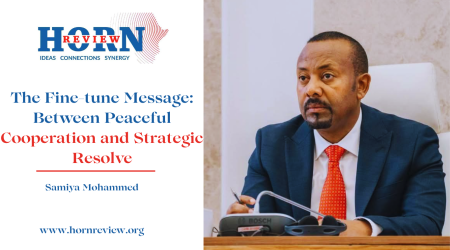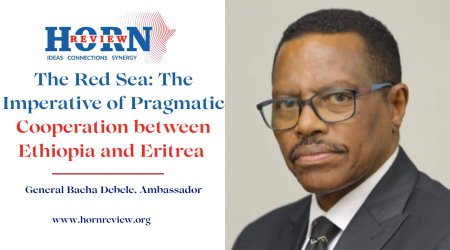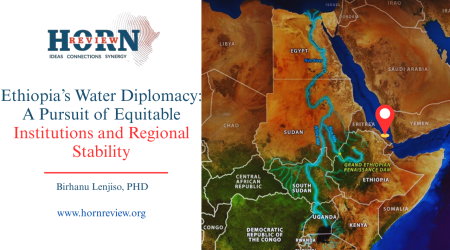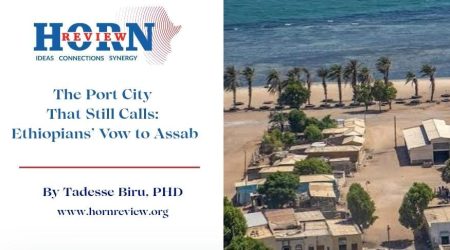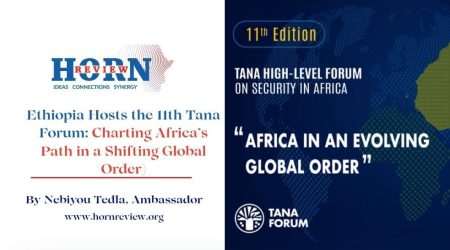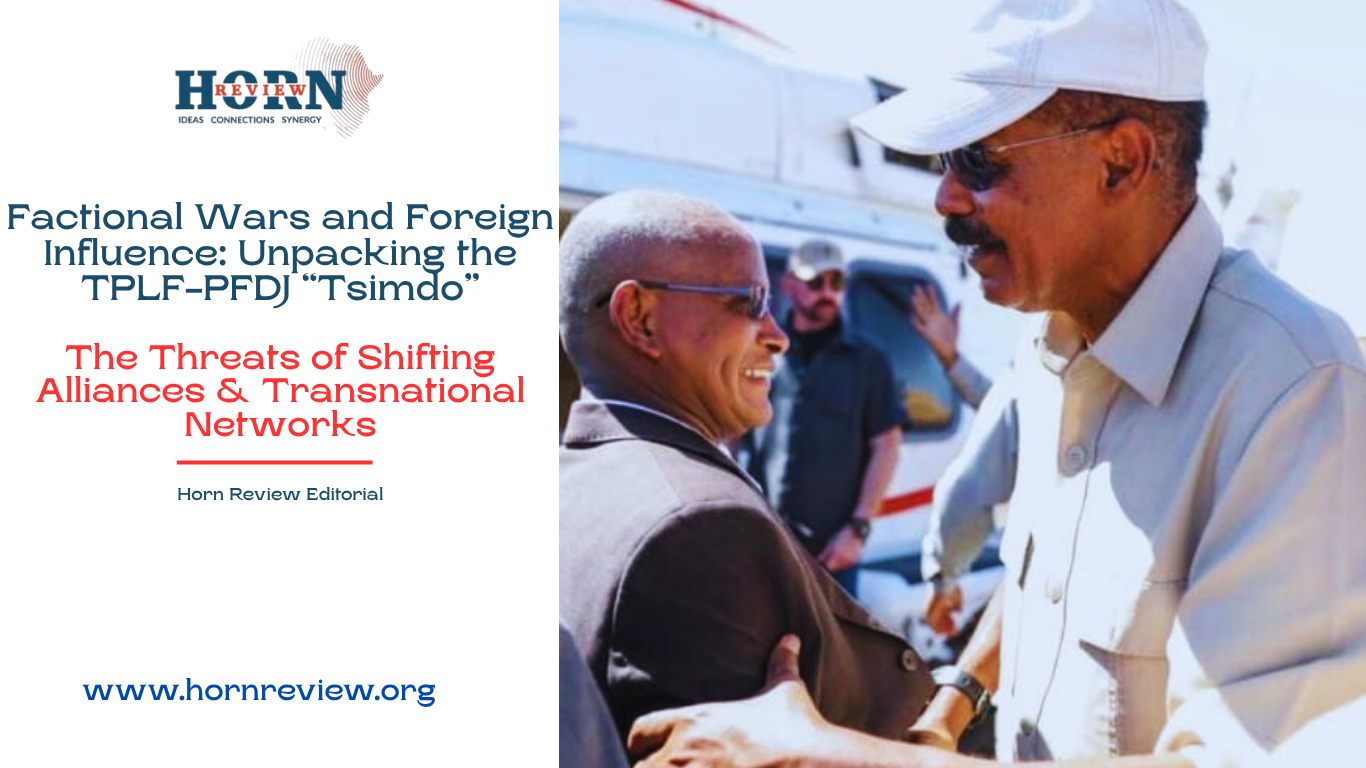
16
Oct
Factional Wars and Foreign Influence: Unpacking the TPLF-PFDJ “Tsimdo”
The Threats of Shifting Alliances & Transnational Networks
The trajectory of Ethiopian politics over the past three decades cannot be understood without closely examining the shifting alliances between the Tigray People’s Liberation Front (TPLF) and the People’s Front for Democracy and Justice (PFDJ), Eritrea’s ruling party, formerly known as the Eritrean People’s Liberation Front (EPLF). These two forces, once united in a common revolutionary struggle, evolved into long-standing adversaries – leading to a conflict that persisted for more than twenty years post the Eritrean–Ethiopian War of 1998–2000. That war officially ended in a stalemate that froze interstate relations and left deep scars in the political and military psyche of both nations.
When Prime Minister Abiy Ahmed assumed office and initiated an ambitious rapprochement with Eritrea, it opened a window for diplomacy but also set the stage for new conflict. While some observers suggested Ethiopia’s overtures were aimed primarily at containing the TPLF, the government went far beyond mere containment, sending eleven draft agreements to Asmara, most of them designed to integrate the two states through economic and security cooperation. This genuine effort at state-level rapprochement was not reciprocated by Eritrea, whose engagement appeared driven primarily by the goal of destroying the TPLF and asserting control over Tigray. The structural asymmetry between Ethiopia’s progressive, reformist leadership and Eritrea’s static, pre-1993 political system further complicated relations.
Within two years, the Tigray war erupted, and Eritrean forces, motivated by their historic animosity to the TPLF, intervened. The Ethiopian government had assumed Eritrea’s involvement would be limited to containment of the TPLF; it did not anticipate the direct extension of Eritrean military influence to the civilian population in Tigray. Despite Ethiopia’s careful intentions, Eritrean forces extended their operations beyond containment objectives, acting directly against the Tigrayan population. The severity of their actions, including mass killings and systematic sexual violence, provoked international outrage and led the Ethiopian Human Rights Commission, a state-sanctioned body, to formally accuse Eritrean troops of rape and targeted massacres against ethnic Tigrayan Ethiopians in the Tigray region. Extrajudicial killings, including those of Abay Tsehaye and other senior TPLF officials in the Tigray War, were carried out independently by Eritrean forces, without authorization from the Ethiopian federal government. These actions marked the first serious erosion of trust between the two governments.
In response, the Ethiopian government officially instructed the withdrawal of Eritrean forces and summoned a high-level delegation to Addis Ababa. This delegation included General Philipos, chief of the Eritrean army; Abreha Kassa, head of Eritrean intelligence; and Yemane Gebreab, political affairs adviser to President Isaias Afwerki and political head of the PFDJ. During discussions, they reported that their army, isolated and sanctioned in the desert for three decades, had been indoctrinated against both the TPLF and the very idea of being Tigrayan. They explained that the army had not fought a single war in thirty years and that, given its structure and training, there was little they could do to immediately control its actions. Ethiopia, confronted with the reality of uncontrollable forces operating on its territory, demanded the immediate withdrawal of Eritrean troops. Compounding the tension were Eritrea’s pre-Pretoria recruitment and arming of insurgents in Amhara, its absence of diplomatic appetite, and President Isaias’s hegemonic ambitions, which precluded PFDJ inclusion in the Pretoria peace agreement and exacerbated tensions with Ethiopia’s federal government.
Following the Pretoria peace agreement, the TPLF fractured into two broad factions. The interim administration, headed by Getachew Reda Kahsay, was systematically undermined and ultimately sabotaged by TPLF old-guard elements, most of whom had Eritrean heritage. Getachew Reda, a relative progressive within the TPLF, eventually left the administration and has since been appointed as a minister and advisor to Prime Minister Abiy Ahmed on East African Affairs. This reflects both his departure from the hardline faction and his alignment with Ethiopia’s federal direction. Relatively progressive figures within the TPLF and other factions of Tigray politics, including Reda’s colleagues and supporters, eventually left the administration and the region. Control passed to hardline TPLF leaders, predominantly from the Adwa clan, who maintained financial ties with the PFDJ, profiting from the looting and smuggling of Tigray’s gold and other resources through Eritrean routes.
This alignment, however, did not emerge spontaneously. It was the result of months of coordinated effort by Egypt and its European allies and former colonial patrons, who have historically supported both the EPLF and TPLF to advance their strategic interests in the Horn of Africa, and sought to rekindle collaboration between the two forces that were then positioning themselves in opposition to Prime Minister Abiy Ahmed. The careful orchestration of these external actors laid the groundwork for the hardline TPLF–PFDJ nexus that now dominates the northern political and economic landscape. The symbolic “Tsimdo” operation, in which Tigrayan IDPs were moved from their camps only to be returned the same day, preventing them from remaining on lands now occupied by Eritrean forces – including Zalamessa and Irob – demonstrates this intersection of political, military, and economic objectives.
General Tadesse Worede, who replaced Getachew Reda to head the current Interim Administration of Tigray, resisted PFDJ’s ill intended involvement in Tsimdo and focused instead on people-to-people aspects, though he never officially met with Eritrean officials. Consequently, he faced revolts from Tigrayan militia members from the Southern and the North-Western front. On the Southern front, General Yohannes “John” Medhin, aligned with Fetlework Gebregziabher, the most powerful figure in the party, opposed Worede’s moderation. Fetlework is a close blood relative of Aboy Sebhat Nega, a founding figure and godfather of the TPLF who is said to have Eritrean heritage. On the North-Western front, General Migbey Haile, partially aligned with Fetlework, oversees gold-related operations in the northwest, where Tigray’s largest reserves are concentrated. These revolts were compounded by the disputed appointment of Alem Gebrewahid, one of the senior politicians within the TPLF, as deputy to General Worede, which the TPLF executive voted against, and which the central committee narrowly approved, highlighting the depth of another factional discord.
In addition, former TPLF military leaders, including Lt. General Tsadkan Gebretensae, have publicly voiced support for the federal government’s effort to fully implement the Pretoria Peace Deal, emphasizing the need for national stabilization and warning against renewed cycles of militarization forced by external powers. In his recent interview with NBC Ethiopia, Tsadkan characterized the “Tsimdo” initiative as a dangerously short-sighted maneuver that risks undermining Tigray’s internal cohesion and exposing the region to renewed external manipulation. His intervention has been widely interpreted as an attempt to distance the more pragmatic Tigrayan elite from the entrenched, hardline faction now aligned with Asmara.
Historical networks also remain central to contemporary strategy. TPLF officials also engaged Dawit Hailegiorgis, a controversial figure whose career spans from the final days of the Derg to contemporary Ethiopian politics. Dawit Hailegiorgis had been a senior Derg official who fled before the regime’s fall, later joined the TPLF’s EPRDF, only to return to exile a few years afterward, where he organized opposition against the TPLF for decades. He played a critical role in establishing the Amhara Popular Front back in 2023, few months after the signing of the Pretoria Peace deal, alongside Eskinder Nega. However, the partnership shortly dissolved amid accusations of embezzlement and internal disputes. TPLF and PFDJ officials have sought his involvement to attempt the consolidation of the structurally divided Fano movement, aiming to prevent challenges to their “advance toward Shoa” – a plan widely understood to be doomed, but illustrative of how historical networks continue to influence contemporary political strategy. With this arrangement, Eritrea’s initial plan to make Tigray the battle ground for its confrontation with Ethiopia’s federal government is now shifted to ethnic Amhara lands. TPLF’s and EPLF’s assumption is that advancing through these territories could penetrate a minimum of several dozen kilometers into Ethiopian territory and come within less than 400 kilometers of Addis Ababa. The strategy anticipates that such proximity to the capital would compel international mediation and negotiations, leveraging geopolitical pressure to achieve their objectives.
Similarly, Andargachew Tsige has had a complex political trajectory. He was active in the student movement opposing Emperor Haile Selassie and the Derg, later joined the TPLF, and served within the EPRDF through the Amhara National Democratic Movement (ANDM) division. Conflicts with TPLF officials drove him into exile, where he led opposition movements until 2005, joining the Coalition party for the 2005 election. Following the June 2005 post-election protests, he was jailed for alleged coup d’état and crimes against the state and the constitutional order. After his release, he returned to exile and organized an armed struggle against the TPLF from Eritrea, receiving funding, training, and arms from the Eritrean government. He was eventually kidnapped at Sanaa Airport in Yemen, while traveling from Asmara to London, and handed over to TPLF intelligence agents, enduring nearly five years of imprisonment and torture until his release in 2018 by Prime Minister Abiy Ahmed. Within the current dynamics, Andargachew was reportedly engaged by TPLF and PFDJ elements to attempt the consolidation of the Amhara political elite in ways reminiscent of the old ANDM, confirming the enduring leverage of historical networks and alliances.
The Oromo Liberation Army (OLA), an ideological and structural extension of the Oromo Liberation Front (OLF), adds another dimension. Historically allied with EPLF and TPLF during the anti-Derg struggle, the OLF split in 1991, with some joining the Oromo People’s Democratic Organization (OPDO) and others fleeing to Eritrea to wage armed struggle for nearly three decades from Asamara, backed by both Egypt and Eritrea. It has been fractured into many factions since, with the OLA emerging post 2018 after Prime Minister Abiy Ahmed officially called for oppositions and insurgents in exile to lay arms and return home, only for some OLF old-guards to rebrand themselves and re-emerge as OLA – as OLF/OLA’s ideological stance, i.e. domination of the center or secession, is incompatible with Abiy Ahmed’s and his administration’s vision of a federal, inclusive Ethiopian state. The OLA has repeatedly allied itself with the TPLF during the Tigray war even though nothing significant materialised out of such alliance. senior advisor to OLA’s leader Jaal Marroo, Jaal Jiregna Gudeta, has recently dismissed Ethiopia’s pursuit of sea access as “not an Oromo question,” a position aimed to detach the Oromo people from state centric agendas and which is also inconsistent with the broader Oromo population, who understand and share the national objective.
These engagements have influenced political alignments and coordination among factions, shaping the dynamics of military campaigns, factional alliances, and both national and regional negotiations. Meanwhile, the TPLF-PFDJ nexus continues its operations, including resource control and territorial maneuvers, such as the Tsimdo operation, reflecting the interplay of historical networks, strategic alignments, and regional influence. These transnational connections interact with local conflicts, Tigray’s internal divisions, and conflict in Amhara, contributing to broader challenges for Ethiopian state security.
In summary, the dynamics unfolding in northern Ethiopia reveals that Ethiopia’s political and security challenges are no longer solely internal but are intimately tied to regional manipulations and transnational networks. Personalistic leadership styles, historical grievances, resource exploitation, factional revolts, proxy militarization, and externally facilitated alliances converge to produce a conflict ecosystem where local, national, and regional actors are entangled. The fragmentation of the TPLF, the persistent interference of the PFDJ, and the historical opposition networks collectively highlight the fragility of the political order in the Horn of Africa, and underscore the enduring threats to regional stability.
By Horn Review Editorial


